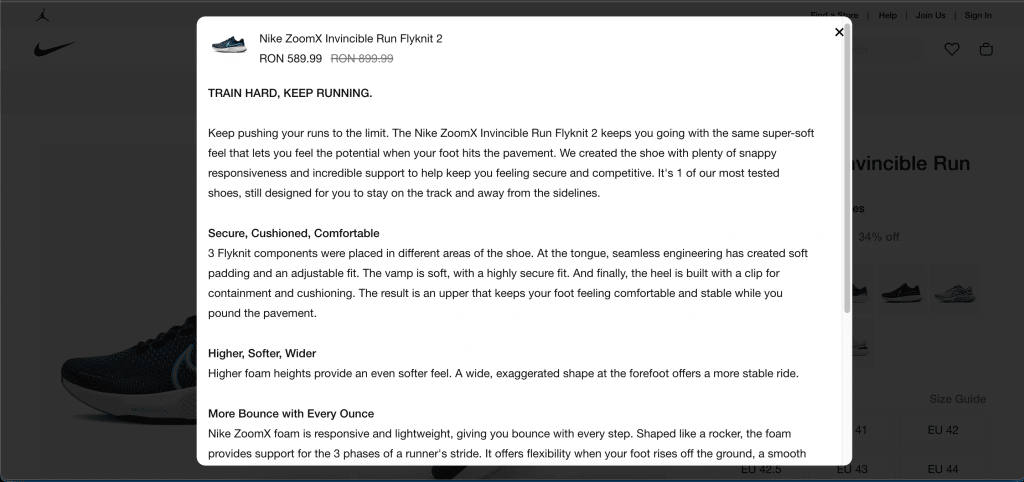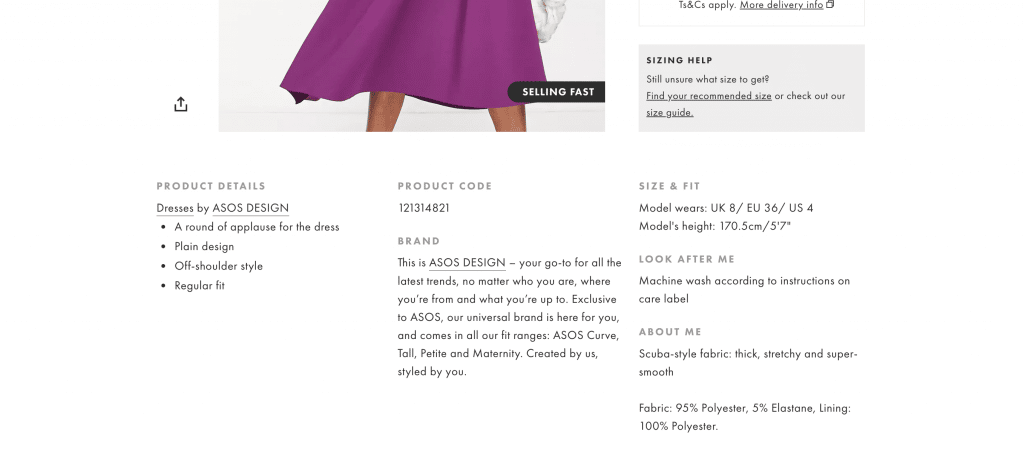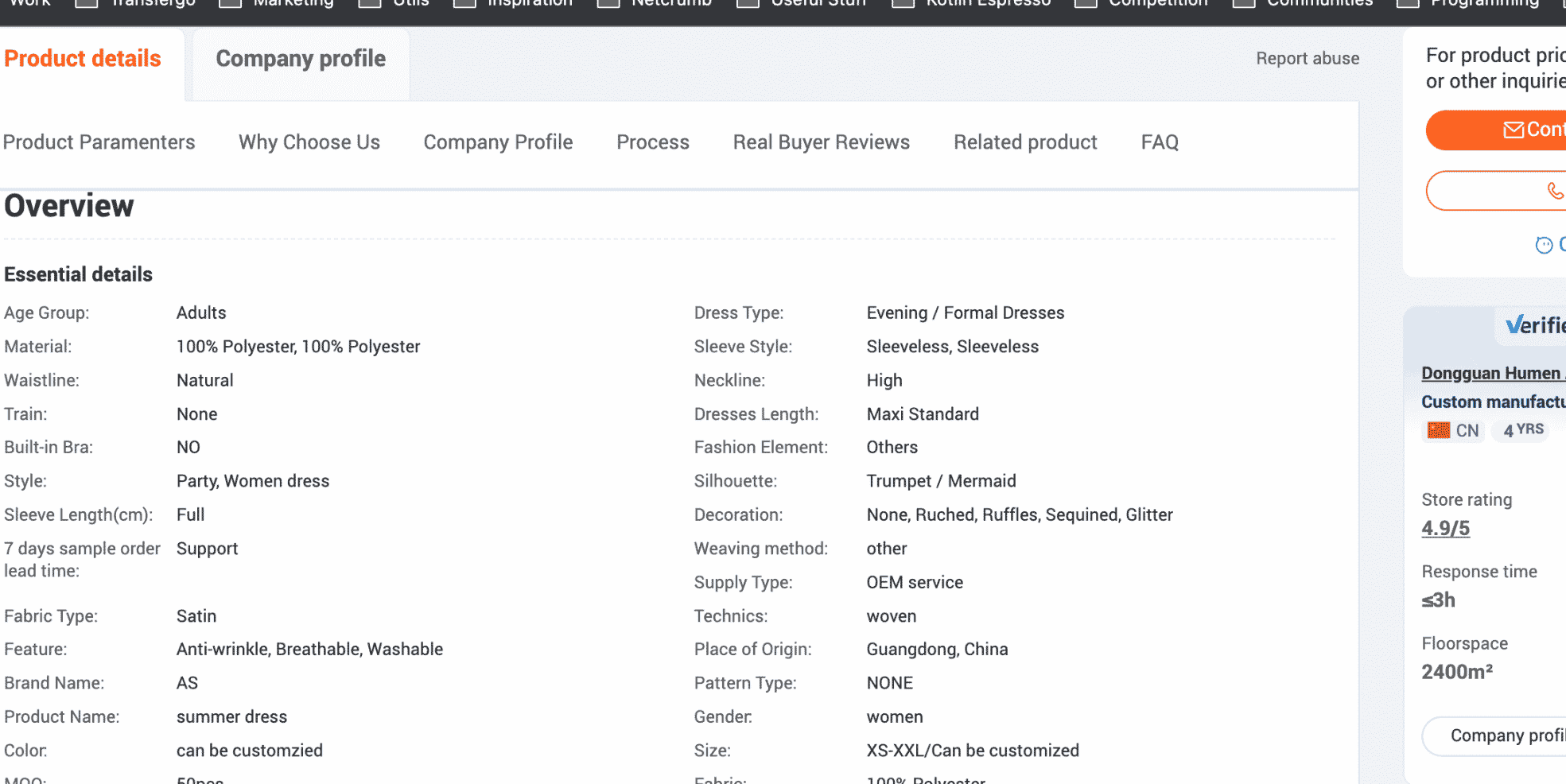With eCommerce sales surpassing five trillion worldwide and the fashion and apparel industry sitting at $752.5 billion and growing 9.1% per year, selling clothing online today is not easy, and you need to differentiate your eCommerce shop from the competition.
How to differentiate? One of the ways is by writing amazing clothing descriptions.
Unfortunately, writing product descriptions for your clothing store is overwhelming.
You might have many questions and do not know if the visitor will become your customer.
You invest time to write them, which costs money, but you never know if they will make a sale.
There are some solutions to your problem, but one involves money, and you need to hire a fashion copywriter.
So you need to pay someone $20-$30 per product description, but you also need to manage the result.
What if there is a more straightforward way?
You write them, but you try to follow some of the best tips and tricks to make your customers love to buy from your brand.
What are the best tips and tricks to write awesome clothing descriptions?
Tell a story
When people visit your product page, they go there because they have a need or clicked a Facebook or Instagram ad.
No matter why they came on the product listing, their first thoughts will be: “Do I need this fashion product?” or “How will I use it?”.
Do you sell an evening dress?
Sell the story of being the best evening cocktail dress since dresses were invented.
Please let your customer know that this dress is “made sure to turn heads and break hearts”.
Do you sell a pair of running shoes?
“Is this pair of shoes the best friend with the tarmac? Will it help me as a customer to complete the 1 mile run in less than five minutes?
You get the point. Every product should have a story to help your customer achieve a goal.
Check Nike for some inspiration. Don’t worry; you do not need to create as many product details as they have.

Know your audience
Why do you need to know your audience when anyone can be your customer?
Any woman can buy from your store if you sell women’s clothing. You are not wrong, but you are not right either.
When you write product descriptions which target a specific niche of people, you know who your ideal customer is.
Let me give you a short example:
Imagine you use in your descriptions the following: “Wear this jacket like an “insert musician from a 90s band”, but your niche is women born after the 90s. Will this work?
When you write for everyone, you write for no one.
Create a user persona for your ideal customer. How?
Take a pen and paper and write who you think it can be and what a day in that person’s life is.
Not only will it help you write better clothing product descriptions, but you will also know better how to create your marketing campaigns.
The user personas do not need to be perfect, and you will change things here and there from time to time, but it will allow you to speak the language your customer speaks.
Replace features with benefits
You decide to manufacture a clothing line and write down all the details: What is the fabric? What type of closure? What kind of color? And so on
Your fashion collection is ready, and now you want to sell.
You tell everyone that you have the best t-shirts made from the most incredible fabric.
And everyone wonders: “Why are these t-shirts so special? Their fabric is 97% cotton and 3% polyester, and I heard that only 100% cotton shirts are good quality.”
What is the problem? You describe your product offering wrong.
Instead of focusing on features, focus on benefits and explain why you decided to add 3% polyester to the fabric.
No matter what you sell, nobody buys clothes because of their features unless you are a famous brand and people do not read your clothing descriptions.
Your customers buy clothing because they need clothes that:
- do not make them sweaty
- make them stand out from the crowd
- want to feel beautiful
- needs to wear something comfortable daily
Etc.
Highlight benefits over features.
Avoid grammar mistakes
Easier said than done!
Grammar and spelling mistakes make your website look unprofessional, and your visitors immediately bounce.
What is the easiest way to fix these mistakes?
For example, if your eCommerce fashion store targets English speakers, but English is not your first language, there is an app which can help you:
Meet Grammarly. You can use their web application, browser or Google docs extension. Check their website, and you will find out how to use it.
Tools can help you, but remember that they are not perfect.
Make it easy to read.
According to this study from ContentSquare, the average time spent on a page is 54 seconds.
What does this mean? You only have a few seconds to catch the attention of your customer.
How?
Create “easy to eye-scan” product descriptions for your clothing shop.
Use short sentences so the reader understands everything they need in just a few seconds.
Do not use technical words. You do not want your customer to wonder, “What did the author want to say?”.
Keep in mind that your customers will not email for an explanation.
The description should not be too “lengthy”.
Check your competition if you do not know how many words the product descriptions should have.
Use this simple tool to count the number of words.
The product descriptions that I usually write have between 100 – 200 words.
Use bullet points
There are a few different types of clothing eCommerce websites. Some include a combo of a story-type product description and bullet points, while others only have bullet points or a story.
Is there something wrong? No!
Use whatever you feel is more appropriate for your products and whatever seems more straightforward.
Asos does an excellent job with their clothing descriptions.
For example, check this evening dress description:

Something I do not like in this example is that they do not feature the benefits and their focus is on the technical parts of the dress.
Let’s change parts of this description from features to benefits:
“Plain Design” – “Versatile piece that can be dressed up or down depending on the occasion” or “Classic style that will never go out of fashion. ( You know you do not have to buy another dress in 3 months ).”
“Off-shoulder style” – “Flattering style for many body types” or “Stand out from the crowd with this stylish and elegant dress.”
“Regular fit” – “Perfect for any formal occasion.”
If creating a story for your product feels overwhelming, then answer your customer’s questions in just a few short sentences:
- “Where can I wear it?”
- “How to wear it?”
- “How good is the quality?”
- “How to care for the product?”
Make sure to describe the clothing product in a way that feels appealing to your customer.
Do not copy the manufacturer’s description.
This is a no-no!
Because it is challenging to write clothing descriptions, some eCommerce shops prefer to copy the ones from their manufacturer.
Why is it not ok?
A wholesale company sells B2B ( business to business ), which is your eCommerce shop, and there is no focus on creating proper product descriptions for their customers.
It’s your job as a B2C seller to verify the manufacturer’s product quality, the fabric, the specifications etc.
Check the below image. It’s from one of the biggest wholesale marketplaces, Alibaba.

Their product details give many technical details for a B2B sale, but it is not compelling for a consumer.
Your job will be to convert these details into a description that will appeal to your customers.
Use a call to action.
Let’s imagine this.
You call a friend and want him to come to London with you for one week.
You explain how great it will be, you sell on your trip, but suddenly, after three minutes, you hang up the phone.
Is this a good thing?
It’s not, but how should it be?
Before you hang up, ask him if he will buy the tickets today: This is a “call to action.”
The same thing happens when you describe clothes.
You let your customer decide what to do next and do not have a call to action at the end of your descriptions.
You might argue that an “Add to cart” or “Buy now” buttons are enough on the product page, but I’m talking about something else.
Add a call to action inside your product descriptions.
For example, if you sell a winter jacket, what call to action can you add?
“If you do not want to freeze outside this winter, buy this jacket for warm and relaxed freezing days.”
Try to avoid passive voice
Clarity is key.
You want your customers to be able to imagine themselves wearing your clothes, and the last thing you want is to confuse them.
That’s why you should avoid using passive voice in your clothing descriptions.
Hold on, so if I do not use passive voice, what should I use?
Use active voice to describe the piece of clothing clearly.
For example, “The shirt has a button-down collar, and a pocket on the left breast” – Active Voice sounds much better than “The shirt is a button-down with a pocket on the left breast.”
Another example is, “The dress is from a soft, flowing fabric.” This sentence is in active voice because the subject, “dress,” is doing the action, “is from.”
A sentence in passive voice would be, “The fabric is soft and flowing.” In this sentence, the subject, “fabric,” is not doing the action.
Using active voice makes your descriptions clear and easier to understand.
Clothing Descriptions Templates
Before we wrap up, I would like to help you more.
I prepared some templates, which you can use as a source of inspiration. Use these templates to help you write clear, concise and effective product descriptions for your online store.
Example One
Looking to buy a [insert type of product] that is both [insert adjectives such as high-quality, long-lasting, etc.] and [insert adverb such as affordably, quickly, etc.]? Look no further than our selection of [insert type of product]! We are proud to offer [insert type of product] that are [insert adjectives such as high-quality, long-lasting, etc.] and [insert adverb such as affordably, quickly, etc.]. Our [insert type of product] are sure to [insert desired outcome such as meet your needs, exceed your expectations, etc.]. With our [insert type of product], you can be sure that you are getting [insert adjectives such as high-quality, long-lasting, etc.] and [insert adverb such as affordably, quickly, etc.]. So don’t wait any longer, order your [insert type of product] today!
Example Two
This [product] is perfect for anyone who wants/needs a [type of product]. It is [quality] and [key benefit], [key benefit], and [key benefit]. You will be satisfied with this purchase or a money back guarantee! Order today to [key benefit]
Example Three
Answer all the below questions:
What are the benefits of this product? What are the features of this product? Who is this product for? Is this product available in different colours/sizes?
Example Four
If need a [product] that can [insert action], look no further than the [product name]. Our [product name] is perfect for [benefit 1], [benefit 2], and [benefit 3]. The fabric of this [product name] is [fabric description]. Order your [product name] today and [enter benefit]!
Wrap Up
Writing a product description might feel challenging at the beginning.
When you start to see patterns, you will be able to create templates.
Understanding what your customers want and need is the key to correctly describing clothing.
The readers of your product descriptions want to read accurate information about the products they need.
